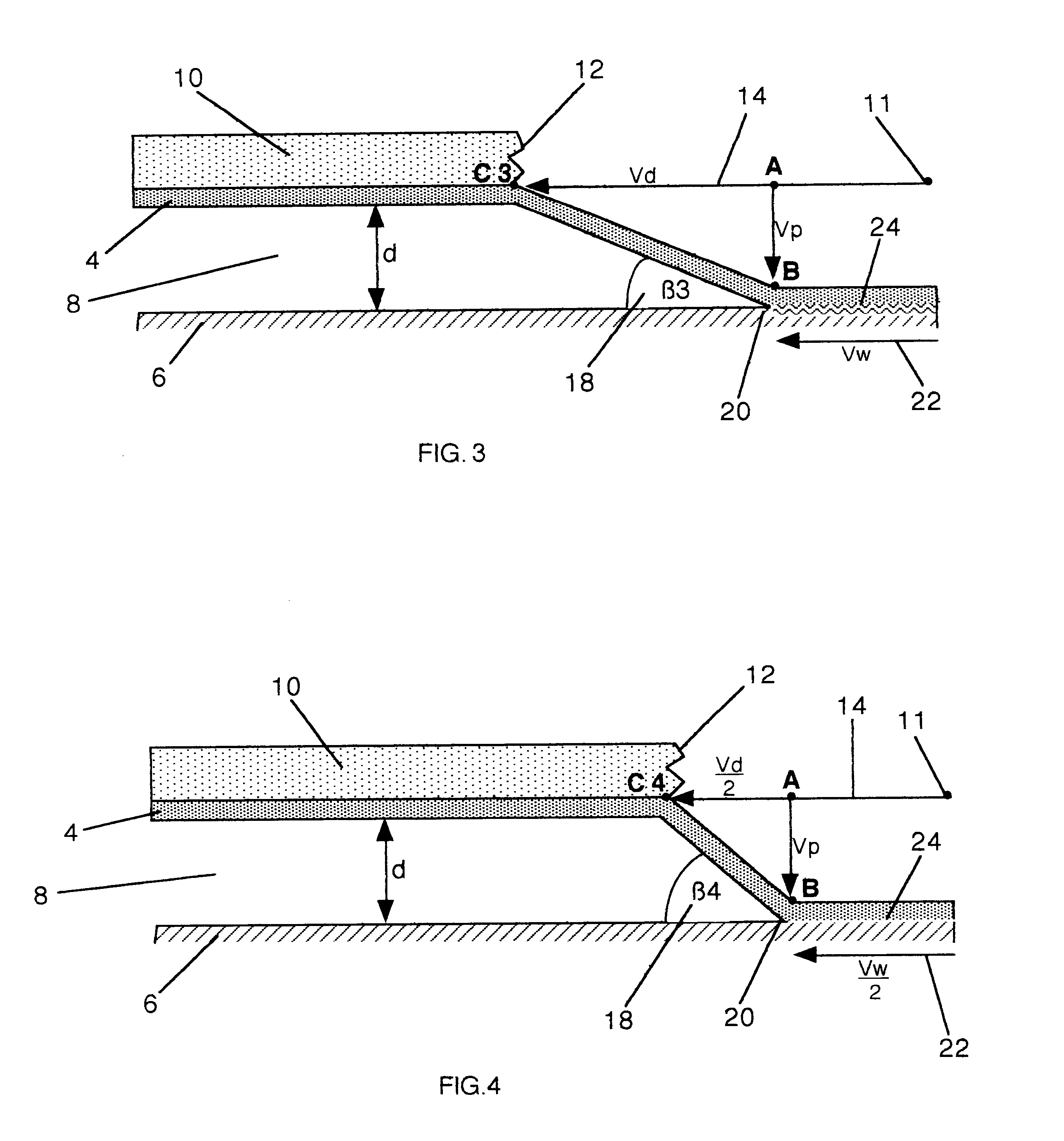Method of explosive bonding, composition therefor and product thereof
- Summary
- Abstract
- Description
- Claims
- Application Information
AI Technical Summary
Benefits of technology
Problems solved by technology
Method used
Image
Examples
example 1
An ANFO explosive composition consisting of 50% w / w ANFO, a stoichiometric mixture of 94% ammonium nitrate and 6% diesel oil, ind 50% w / w `J BLAST`, was made up. The `J BLAST` is a proprietary brand of silica used in the sandblasting of stone work and consisted primarily of 35-45% silica, 35-45% calcium oxide and 10-15% aluminum oxide. The silica had particle sizes ranging from 0.05 to 0.1 mm, a hardness of 5-6 moh and of sharp angular form to be of value in the practice of the present invention.
A 10 cm deep layer of this explosive composition was found to have a detonation velocity of 1,300 m / sec, and was used to bond a 6mm thick cladder of titanium to a 50 mm thick steel substrate. Metallographic examination of the resulting clad multi-metallic composite showed a flat interface, i.e. it was devoid of the waves which characterizes the conventional prior art explosive-bonded interface. No intermnetallics were present at the interface and the bond had a shear strength in excess of 60...
example 2
An explosive composition consisting of 43% ANFO and 57% `J BLAST` was prepared. A 22.5 cm deep layer of this explosive composition detonated at a velocity of 1,625 m / sec and was used to bond a 12.5 mm cladder of titanium through an intervening 0.5 mm thick niobium interlayer to a steel substrate of 15 mm thickness, in a single bonding operation.
A ductile bond was obtained having a shear strength of 50,000 psi. Metallography showed a waveless condition at each of the two interfaces, i.e. the niobium / steel interface and the niobium / titanium interface.
example 3
An explosive composition consisting of 50% w / w amatol explosive and 50% `J BLAST` silicate-based sandblasting material was prepared. Amatol is an explosive mixture consisting of 80% w / w ammonium nitrate and 20% w / w trinitrotoluene (TNT).
A 10 cm deep layer of the aforesaid composition was found to have a sustainable detonation velocity of 1,460 m / sec.
PUM
 Login to View More
Login to View More Abstract
Description
Claims
Application Information
 Login to View More
Login to View More - R&D
- Intellectual Property
- Life Sciences
- Materials
- Tech Scout
- Unparalleled Data Quality
- Higher Quality Content
- 60% Fewer Hallucinations
Browse by: Latest US Patents, China's latest patents, Technical Efficacy Thesaurus, Application Domain, Technology Topic, Popular Technical Reports.
© 2025 PatSnap. All rights reserved.Legal|Privacy policy|Modern Slavery Act Transparency Statement|Sitemap|About US| Contact US: help@patsnap.com


